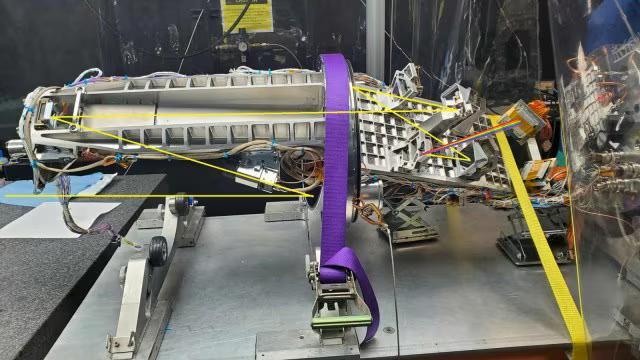
NASA to Launch Sounding Rocket to Study Sun’s Chromosphere
The sun, the star at the center of our solar system, is a fascinating and complex entity that continues to captivate scientists and researchers around the world. From its surface to its outer atmosphere, the sun is a dynamic and ever-changing ball of hot, glowing gas. One of the most intriguing regions of the sun is its chromosphere, a reddish layer that lies between its atmosphere and photosphere. This region is where flares and plasma jets originate, and it is here that scientists hope to gain a deeper understanding of the sun’s behavior.
To achieve this goal, NASA is set to launch a suborbital sounding rocket from New Mexico on July 18. The 10-minute mission will carry the Solar EruptioN Integral Field Spectrograph (SNIFFS) to the sun, where it will capture real-time high-resolution spectroscopic data from the chromosphere and its transition region.
The SNIFFS instrument is designed to study the dynamics of the sun’s chromosphere, which is the layer of the sun’s atmosphere that extends from the photosphere to the corona. The chromosphere is a complex and dynamic region, with plasma temperatures ranging from 5,000 to 1 million degrees Celsius. It is here that magnetic fields, solar flares, and coronal mass ejections (CMEs) originate, and it is these events that can have a significant impact on the Earth’s magnetic field and upper atmosphere.
The SNIFFS instrument is designed to capture high-resolution spectroscopic data from the chromosphere and its transition region. This data will be used to study the dynamics of the sun’s chromosphere, including the movement of plasma and the interactions between different layers of the sun’s atmosphere. The instrument will also be able to detect solar flares and CMEs, which can be used to predict their impact on the Earth’s magnetic field and upper atmosphere.
The sounding rocket will launch from the White Sands Missile Range in New Mexico, and will reach an altitude of approximately 200 kilometers above the Earth’s surface. From this altitude, the SNIFFS instrument will be able to capture high-resolution spectroscopic data from the sun’s chromosphere and its transition region.
The mission will be a significant milestone in the study of the sun’s chromosphere, and will provide scientists with valuable insights into the dynamics of this complex region. The data collected during the mission will be used to improve our understanding of the sun’s behavior, and will help scientists to predict and prepare for solar flares and CMEs.
The SNIFFS instrument is designed to be a versatile tool that can be used to study a wide range of phenomena in the sun’s chromosphere. The instrument will be able to capture data on the sun’s magnetic field, plasma temperature, and velocity, as well as the movement of solar flares and CMEs.
The mission will be a collaborative effort between NASA and several other organizations, including the University of Colorado and the University of Michigan. The SNIFFS instrument was developed by a team of scientists and engineers at the University of Colorado, and will be used to study the sun’s chromosphere and its transition region.
The launch of the sounding rocket is scheduled for July 18, and will be carried out by NASA’s Wallops Flight Facility in Virginia. The mission will be a major milestone in the study of the sun’s chromosphere, and will provide scientists with valuable insights into the dynamics of this complex region.
Source:






